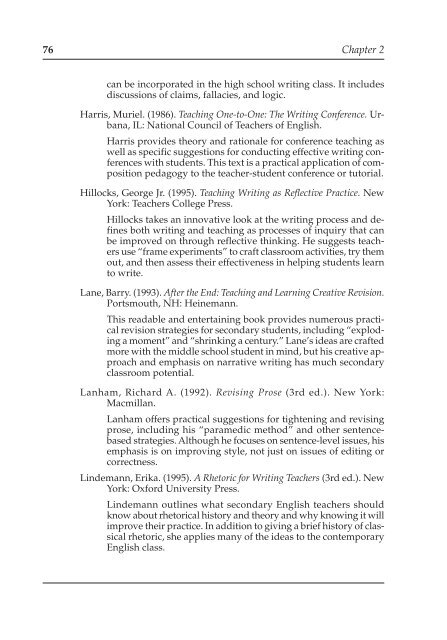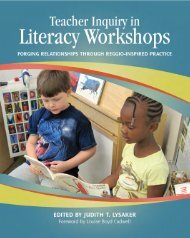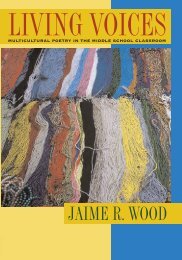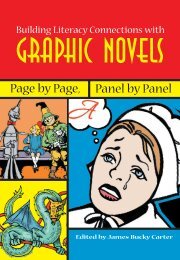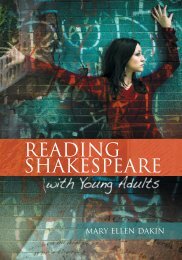2 Narratives about Teaching Writing - National Council of Teachers ...
2 Narratives about Teaching Writing - National Council of Teachers ...
2 Narratives about Teaching Writing - National Council of Teachers ...
- No tags were found...
Create successful ePaper yourself
Turn your PDF publications into a flip-book with our unique Google optimized e-Paper software.
76 Chapter 2can be incorporated in the high school writing class. It includesdiscussions <strong>of</strong> claims, fallacies, and logic.Harris, Muriel. (1986). <strong>Teaching</strong> One-to-One: The <strong>Writing</strong> Conference. Urbana,IL: <strong>National</strong> <strong>Council</strong> <strong>of</strong> <strong>Teachers</strong> <strong>of</strong> English.Harris provides theory and rationale for conference teaching aswell as specific suggestions for conducting effective writing conferenceswith students. This text is a practical application <strong>of</strong> compositionpedagogy to the teacher-student conference or tutorial.Hillocks, George Jr. (1995). <strong>Teaching</strong> <strong>Writing</strong> as Reflective Practice. NewYork: <strong>Teachers</strong> College Press.Hillocks takes an innovative look at the writing process and definesboth writing and teaching as processes <strong>of</strong> inquiry that canbe improved on through reflective thinking. He suggests teachersuse “frame experiments” to craft classroom activities, try themout, and then assess their effectiveness in helping students learnto write.Lane, Barry. (1993). After the End: <strong>Teaching</strong> and Learning Creative Revision.Portsmouth, NH: Heinemann.This readable and entertaining book provides numerous practicalrevision strategies for secondary students, including “explodinga moment” and “shrinking a century.” Lane’s ideas are craftedmore with the middle school student in mind, but his creative approachand emphasis on narrative writing has much secondaryclassroom potential.Lanham, Richard A. (1992). Revising Prose (3rd ed.). New York:Macmillan.Lanham <strong>of</strong>fers practical suggestions for tightening and revisingprose, including his “paramedic method” and other sentencebasedstrategies. Although he focuses on sentence-level issues, hisemphasis is on improving style, not just on issues <strong>of</strong> editing orcorrectness.Lindemann, Erika. (1995). A Rhetoric for <strong>Writing</strong> <strong>Teachers</strong> (3rd ed.). NewYork: Oxford University Press.Lindemann outlines what secondary English teachers shouldknow <strong>about</strong> rhetorical history and theory and why knowing it willimprove their practice. In addition to giving a brief history <strong>of</strong> classicalrhetoric, she applies many <strong>of</strong> the ideas to the contemporaryEnglish class.


